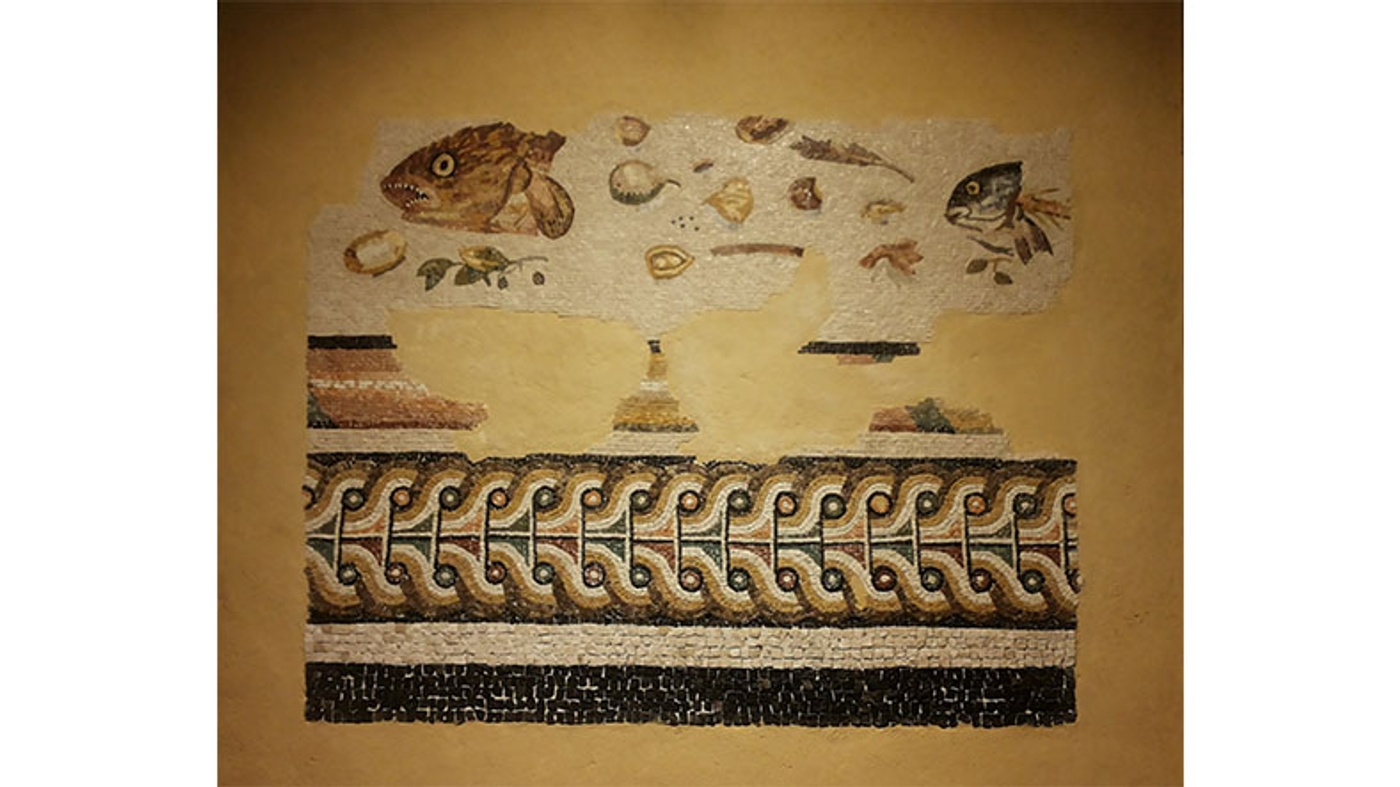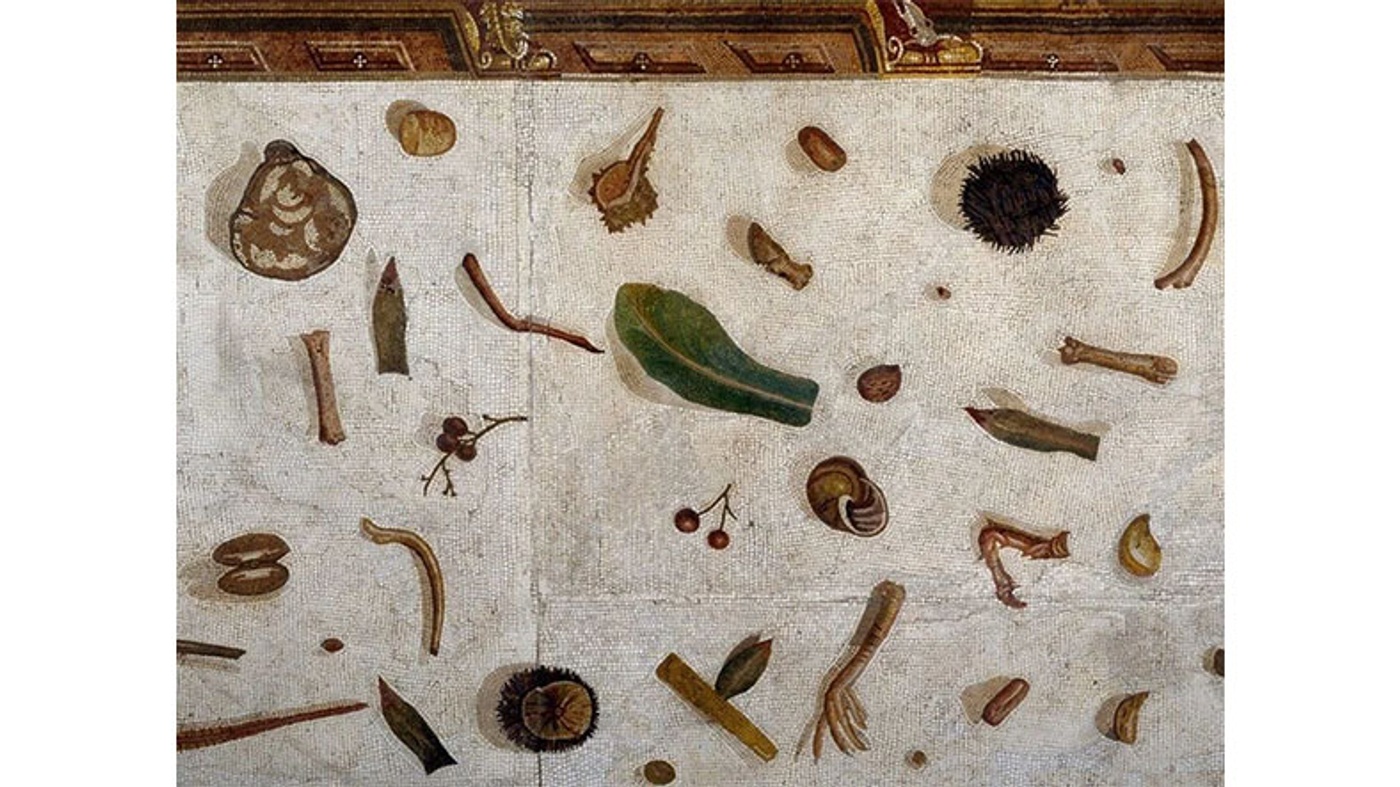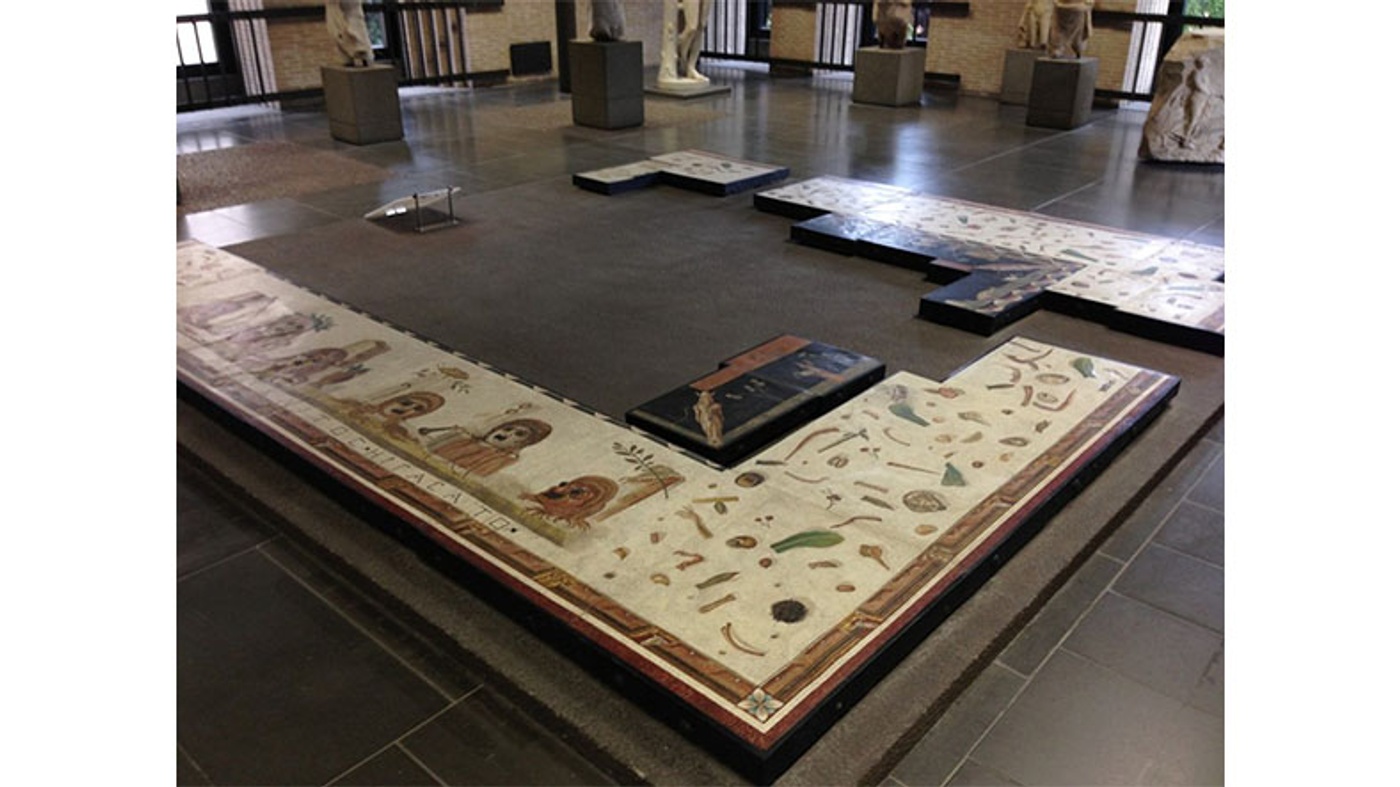In Ancient Rome, feasts were not limited to food and drink but also identified with art and architecture. The mosaics found in homes from this period not only provide a visual feast but also offer clues about the social and cultural dynamics of the era. The ‘asarotos oikos’ or ‘unswept room’ motif mosaics are particularly significant in this regard.
The Visual Illusions of Ancient Rome and the “Asarotos Oikos” Motif

Although these mosaics appear to be floors covered with scattered food leftovers, broken glass pieces, and other debris, these details are actually made of stone and glass pieces crafted with great skill. At first glance, these details look like real trash, but upon closer inspection, they showcase the craftsmanship and creativity of the artisans. These types of mosaics, displayed in the Profane Museum, are considered a reflection of lavish Roman feasts.

The visual illusion in these mosaics is considered one of the indicators of wealth in that period. For the Romans, it was not only about flaunting wealth and abundance but also served as a constant reminder of the transience of life and the concept of death. The ‘memento mori’ philosophy through these mosaics emphasizes that feasts and opulence are temporary, and everything eventually turns to dust and trash.
The Visual and Cultural Richness of Ancient Rome

The Romans used this artistic ground to give their guests a chance to showcase their wealth and cultural superiority. These mosaics decorating the banquet rooms reflect the social status and aesthetic understanding of that period and have reached our time as significant works of art. The intertwined connection between art, architecture, and social life in Ancient Rome is most clearly demonstrated in the asarotos oikos mosaics.
Source: Atlas Obscura, Roman Empire Times


